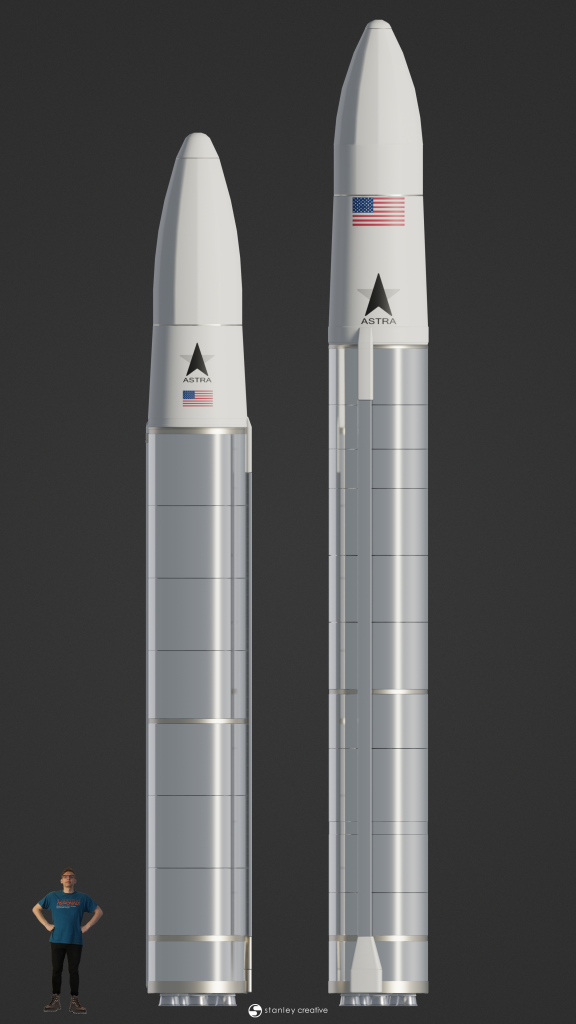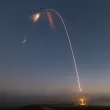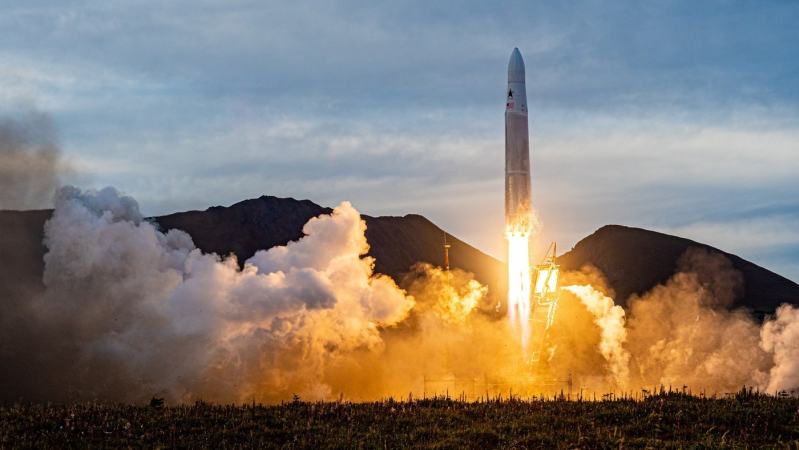Featured image credit: Astra / John Kraus
Lift Off Time/Launch Window | August 28, 2021 – 21:00-00:30 UTC | 14:00-17:30 PDT |
|---|---|
Mission Name | STP-27AD1, a mass simulator |
Launch Provider | Astra |
Customer | U.S. Space Force |
Rocket | Rocket 3.3 – LV0006 |
Launch Location | Launch Pad 3B, Pacific Spaceport Complex in Kodiak, Alaska |
Payload mass | Unknown, up to 25 kg (55 lb) |
Where is the payload going? | To a 415 km low Earth Orbit (LEO) at 70° inclination |
Will they be attempting to recover the first stage? | No, this is not a capability of Astra |
Where will the first stage land? | The first stage will crash into the Pacific Ocean |
Will they be attempting to recover the fairings? | No, this is not a capability of Astra |
Are these fairings new? | Yes |
How’s the weather looking? | Live weather updates can be accessed here |
This will be the: | – 1st launch for Astra in 2021 – 1st commercial launch for Astra – 3rd launch of an Astra Rocket 3 – 83rd orbital launch attempt of 2021 |
Where to watch | NASA Spaceflight’s official livestream Live updates on Astra’s Twitter account |
What Does All This Mean?
Astra is launching its next payload to space on its Rocket 3.3. STP-27AD1 is one of two test launches for the Department of Defense (DoD) as part of the Space Test Program (STP) of the U.S. Space Force. Taking off to the skies from Launch Pad 3B at the Pacific Spaceport Complex in Kodiak, Alaska, Rocket 3.3 will only be Astra’s 3rd attempt at reaching orbit.
This article will be updated as more information becomes available.
STP-27AD1
Due to the classified nature of the program, not much is known about the plans the DoD has for these missions. STP-27AD1 will be a mass simulator so Astra and the DoD can validate Rocket 3’s capability. What we know so far is that this is the first of two planned missions flying on Astra’s Rocket 3. The second one, STP-27AD2, will launch later this year. The DoD’s Space Test Program provides flight opportunities for test and experimental payloads.
Mission Timeline
| HH:MM:SS From Lift Off | Events |
|---|---|
| T-01:15:00 | Start of pre-launch procedure |
| T-00:45:00 | Propellant load begins |
| T-00:20:00 | Propellant load complete |
| T-00:15:00 | Entering terminal count |
| T-00:15:00 | Water deluge system test |
| T-00:03:00 | Ignition! |
| T+-00:00:00 | Lift Off! |
| T+00:00:12 | Begin Pitch Over |
| T+00:01:15 | MaxQ |
| T+00:02:50 | Main Engine Cut Off (MECO) |
| T+00:02:55 | Fairing separation |
| T+00:03:00 | Stage separation |
| T+00:03:05 | Second stage ignition |
| T+00:08:20 | Second Engine Cut Off (SECO) |
| T+00:08:30 | Payload deployment signal |
Astra’s Rocket 3*
This Rocket 3, also known as LV0006, will be Astra’s fourth iteration of their third version of their small-sat launch vehicle. The Rocket 3 series is Astra’s orbital rocket series with LV0006 being ready for launch after its successful static fire on August 04, 2021. With a height of 13.1 m (43 ft), a diameter of 1.32 m (4.3 ft) and a payload capacity of 25 kg to a 500 km Sun-Synchronous Orbit (SSO), it is in the same class of small-sat launch vehicles as Rocket Lab’s Electron.

This two-stage rocket is powered by RP-1 and LOx. The first stage will make use of five electric-pump-fed Delphin engines that will produce a total thrust of ~145 kN (~32,500 lbf) at liftoff. The second stage is powered by a single pressure-fed Aether engine that will produce ~3.3 kN (740 lbf) of thrust in a vacuum. Since Astra is a rather secretive company, they have not released any technical information about their engines, such as ISP (Specific Impulse), TWR (Thrust to Weight Ratio), or combustion chamber pressure. The aluminum body and tanks of Rocket 3 have some similarities to SpaceX’s Starships, with its welded stacked rings of stainless steel.
Another unique characteristic is that Astra’s Rocket 3 series rockets fit into a standard shipping container and can be towed by a truck. To set up the rocket on its mobile launch structure, it only takes a handful of ground support staff and about a week to go through vehicle checks, a wet dress rehearsal, and the launch readiness review. Astra’s goal for the future is to bring the time required to set up the rocket down to under 24 hours, so that it can meet the needs of some special customers who require a rapid launch schedule for their payloads.
*information based on the press kit of Astra’s launch of Rocket 3.2
Differences To Earlier Rocket 3 Series Rockets
Astra have upgraded their series 3 rockets launch after launch, and the same is true for this rocket too. It is not exactly known what those upgrades are other than an update to the fuel and oxidizer mixture of the rocket’s second stage. Furthermore, Chris Kemp, CEO of Astra, has stated in an interview with NASA Spaceflight that they have stretched the first stage for more performance.

Earlier Losses
Astra has launched two orbital class rockets in an attempt to reach orbit. So far, all of these launches have failed to achieve orbit, with the latest, Rocket 3.2, just barely missing orbit by about 500 m/s. Its second stage safely re-entered before completing one full rotation of Earth.
- Rocket 3.0: loss of the vehicle during ground testing due to a stuck open valve while detanking the vehicle.
- Rocket 3.1: FTS activated 21s into flight due to a software issue in the guidance system.
- Rocket 3.2: Rocket 3.2 failed to achieve orbit by ~500 m/s due to a wrong mixture of fuel and oxidizer on the second stage.
Astra is confident to reach orbit this time, as it had to only change the fuel/oxidizer mixture slightly to achieve a more efficient burn that will result in reaching orbit.




Go Astra!!!
im pretty sure the launch was a failure u should change it to red